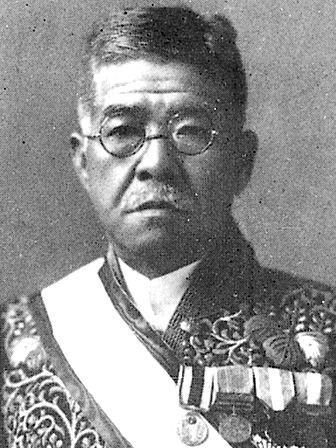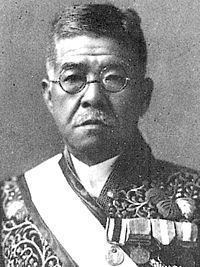Name Suzuki Kisaburo | Nationality Japanese | |
 | ||
Died June 24, 1940(1940-06-24) (aged 72) Occupation Cabinet Minister, politician | ||
Suzuki Kisaburō (鈴木喜三郎, 6 November 1867 – 24 June 1940) was a statesman, politician and cabinet minister in Taishō and early Shōwa period Japan.
Biography

Suzuki was born in what is now part of the city of Kawasaki, Kanagawa, as Kawashima Kisaburō. A younger son, he was adopted at an early age by Suzuki Jiko, a Buddhist prelate in Kawasaki, and took the Suzuki surname.
He was a graduate of the law school of Tokyo Imperial University in 1891, and entered the Ministry of Justice. In 1893, he became a judge at the Tokyo District Court and subsequently was promoted to the Tokyo Court of Appeals, and finally to the Supreme Court of Judicature of Japan, where he was noted for his quick judgments. He then served as Chief of the Criminal Affairs Bureau of the Justice Ministry, Vice Justice Minister, and Public Prosecutor General in 1921.
Suzuki’s political career began in 1920, when he was appointed to the House of Peers. In 1924, he was selected as Justice Minister in the cabinet of Kiyoura Keigo. During this period, he lent aid to the Kokuhonsha, a nationalist organization founded by Kiichirō Hiranuma. Following the collapse of the Kiyoura administration in 1926, Suzuki joined the Rikken Seiyūkai. The following year, he joined the administration of Tanaka Giichi as Home Minister. While Home Minister, he strengthened the Tokubetsu Kōtō Keisatsu and enforcement of the stricter Peace Preservation Laws, and took an uncompromisingly harsh position against activities by the outlawed Japan Communist Party, cumulating in the March 15 incident which involved the arrest of hundreds of known party members and suspected party sympathizers. He also used his position as Home Minister to replace numerous prefectural governors with Rikken Seiyūkai members, as well as showing favoritism to promotions within the Ministry itself towards party members. These actions led to his forced resignation in 1928 after charges were made this constituted illegal interference with the 1928 General Election.
Suzuki returned to the Diet of Japan in the 1932 General Election, when he was elected to the House of Representatives from the Kanagawa 2nd district. He returned to the cabinet as Justice Minister from 1931-1932 and as Home Minister from 1932-1933 under the Inukai administration. On Inukai’s assassination in the May 15 incident, Suzuki became president of the Rikken Seiyūkai. However, despite holding a majority of the seats in the Diet of Japan, Suzuki was not selected to become Prime Minister, largely due to a long-standing enmity with the last genrō, Saionji Kinmochi, who favored Admiral Saitō Makoto for the post. After Saitō’s resignation in 1934, Suzuki was again sidelined, and the office of Prime Minister went to Okada Keisuke.
Following losses in the 1936 General Election, Suzuki was pressured to resign as head of the Rikken Seiyūkai. He held onto the post until 1937 as part of a collective leadership. Suzuki died in 1940, and his grave is at the Yanaka Cemetery in Tokyo.
